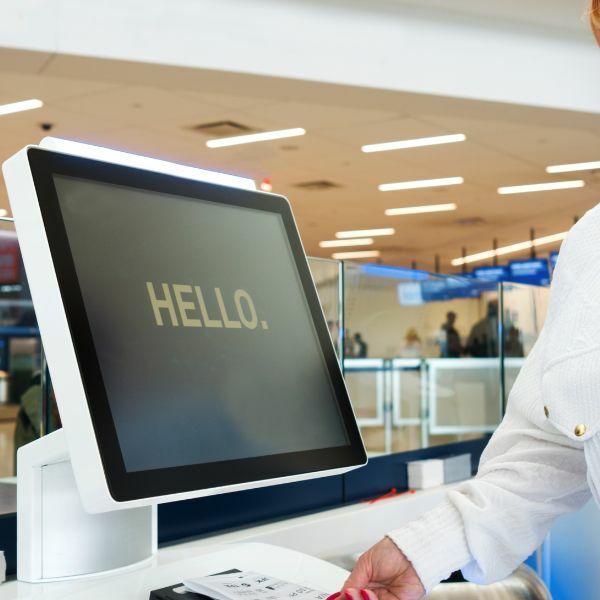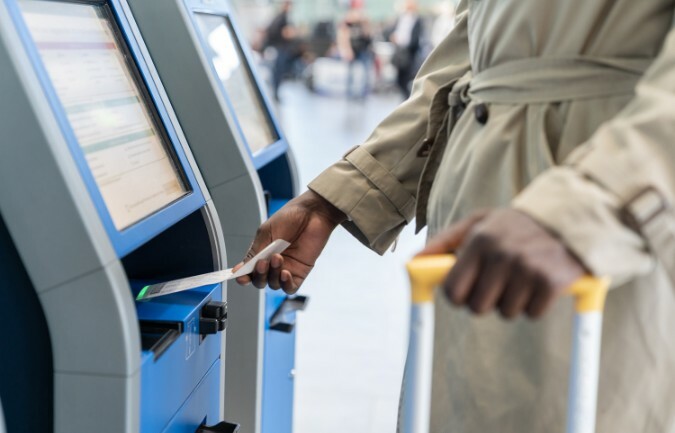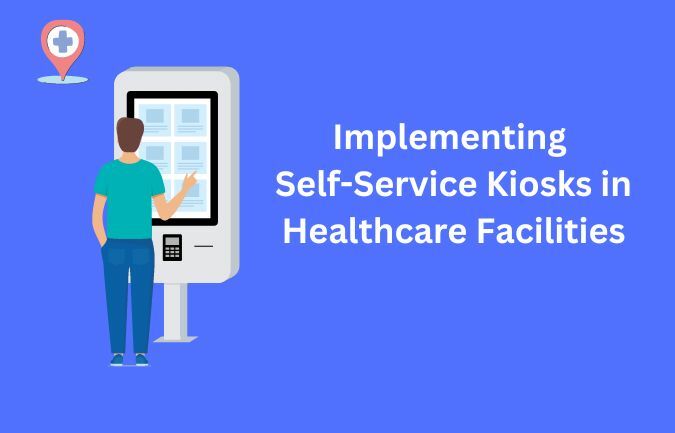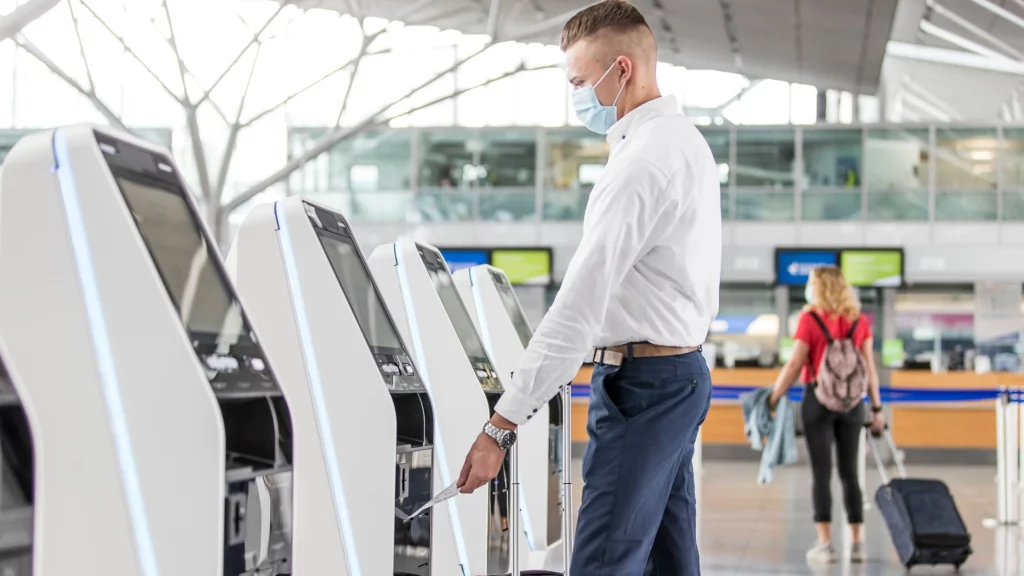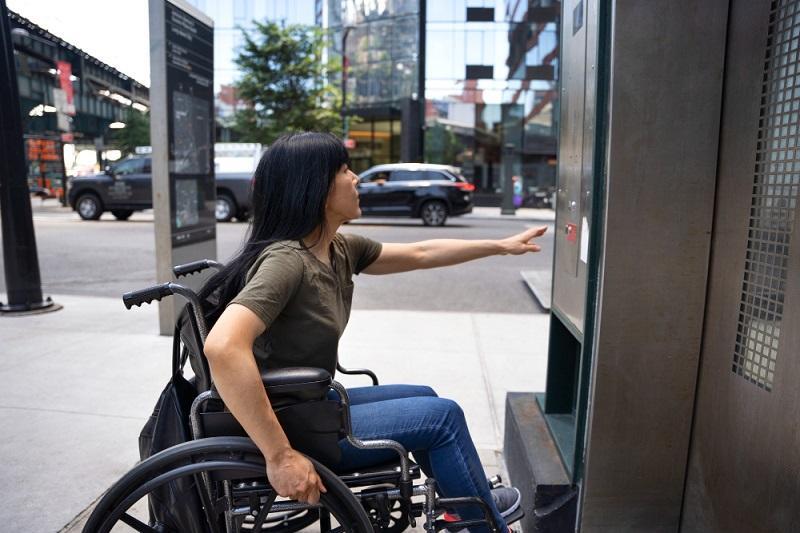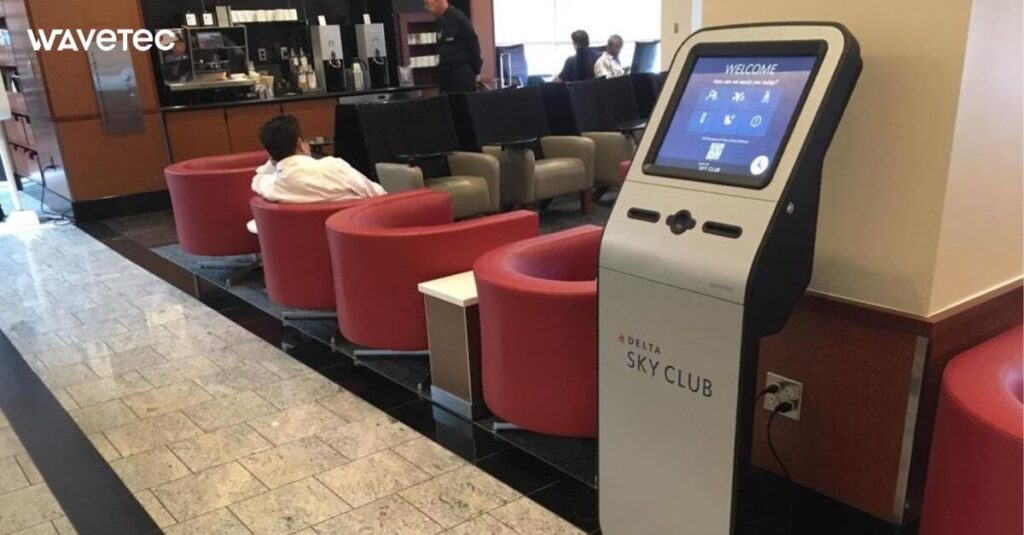One area that has witnessed a significant transformation is the Department of Motor Vehicles (DMV), notorious for long queues, paperwork hassles, and time-consuming processes.
However, a promising and innovative solution has emerged as a Self-Service Kiosk for DMV operations, aiming to revolutionize how citizens interact with their local motor vehicle departments.
Gone are the days when a simple license renewal or vehicle registration necessitated hours of standing in line, dealing with bureaucratic red tape, and enduring the frustration of manual paperwork.
Implementing Self-Service Kiosks at DMV offices has offered fresh air, empowering individuals to take control of their transactions with utmost ease and efficiency. These cutting-edge kiosks act as.
In this article, we delve into the world of Self-Service Kiosks for DMV and explore how they have evolved to become an essential component of modernizing government services.
We will examine the myriad benefits these kiosks bring to the table, such as reducing wait times, enhancing accuracy, and freeing up staff to focus on more complex tasks.
Additionally, we will address potential challenges and concerns, along with the steps taken to ensure security and privacy in these technological marvels.
As we embark on this journey, it becomes evident that Self-Service Kiosks are poised to transform the DMV experience, providing a glimpse into a future where efficient, user-centric services redefine the way citizens interact with government agencies.
Benefits: Elevating the DMV Experience with Self-Service Kiosks
The self-service kiosk for DMV solution brings many advantages to the DMV, transforming the experience for both customers and staff. Here’s how this solution improves the overall DMV experience:
1. Reduced Wait Times
The kiosks drastically reduce wait times at the DMV by offering self-service options like DMV Self Check-In. Customers can complete transactions efficiently and independently, minimizing congestion and ensuring a faster, more streamlined experience.
Shorter wait times lead to increased customer satisfaction and a more productive work environment for DMV staff.
2. Improved Customer Satisfaction
The convenience and user-friendly interface of these self-service kiosks greatly enhance customer satisfaction.
Customers can complete transactions at their own pace, avoiding potential errors caused by rushing through paperwork. With reduced frustration and smoother processes, customers leave the DMV with a positive impression, fostering improved customer loyalty and trust.
3. Enhanced Staff Productivity
By automating routine transactions, self-service kiosks free up DMV staff to focus on more complex tasks that require specialized assistance.
This boosts staff productivity and allows them to provide better support to customers who require individual attention. Staff can devote their expertise to handling unique situations and ensuring a higher quality of service.
4. Data-Driven Decision Making
The self-service kiosk for DMV incorporates advanced data analytics capabilities. The system gathers valuable customer behavior, queue management for the public, and service efficiency insights.
DMV management can leverage this data to make informed decisions, optimize resource allocation, and identify areas for process improvement, resulting in enhanced operations and overall service quality.
5. Seamless Integration and Scalability
The self-service kiosk solution is designed to integrate with existing DMV systems and processes seamlessly. It offers scalability to accommodate evolving customer needs and regulatory changes.
The solution can be customized to align with specific DMV requirements, ensuring a cohesive and efficient workflow.
6. Accessibility and Inclusivity
These self-service kiosks are designed to cater to a diverse range of customers. The intuitive interface and touch-screen functionality make it accessible to users of varying technological abilities.
Multilingual support ensures inclusivity, allowing customers to navigate the kiosk in their preferred language and fostering a more inclusive DMV environment.
Key Features: Revolutionizing the DMV Experience
The usual DMV Self-Service Kiosk is tailored to address the unique challenges the DMV faces, providing a range of key features that enhance efficiency and empower both staff and customers. Here’s how these features benefit the DMV:
1. Streamlined Driver’s License Renewal and Replacement
The kiosk For DMV simplifies the driver’s license renewal and replacement process, reducing wait times and enabling customers to complete transactions independently. By automating these tasks, DMV staff can focus on more complex issues, improving overall efficiency and customer satisfaction.
2. Efficient Vehicle Registration and Tags
The DMV Self-Service Terminal allows customers to easily register their vehicles and obtain new tags. By digitizing the process and eliminating the need for manual paperwork, the DMV can significantly reduce errors and processing time, freeing up resources and enhancing customer convenience.
3. Seamless ID Card Applications and Updates
The self-service kiosk for DMV guides customers through ID card applications and updates, streamlining the process and ensuring accuracy. By empowering customers to handle these tasks independently, the DMV experiences shorter queues, optimized staff utilization, and improved service delivery.
4. Swift Address Changes
DMV Kiosk Services simplify the address change process, allowing customers to update their information quickly and accurately. By eliminating the need for manual forms and data entry by staff, the DMV can improve data accuracy, reduce administrative burdens, and enhance overall operational efficiency.
5. Convenient Ticket Payment and Citation Services
Customers can conveniently resolve outstanding tickets and citations through self-service kiosks, reducing the need for in-person visits.
This feature expedites the payment process, improves revenue collection, and frees up staff to focus on critical tasks, resulting in a more efficient DMV operation.
By implementing the self-service kiosk for the DMV solution, the DMV can experience a significant transformation in operational efficiency, customer satisfaction, and staff productivity. Integrating an advanced queueing management system also ensures a smooth customer flow, minimizing wait times and optimizing staff resources.
Moreover, using data analytics empowers the DMV to make informed decisions, identify bottlenecks, and continually enhance service delivery.
How It Works: Streamlined Self-Service Experience
Using a self-service kiosk at the DMV is a breeze. Follow these simple steps to navigate the intuitive interface and complete transactions with ease:
1. Approach the Self-Service Kiosk
Customers can quickly locate the self-service kiosk within the DMV office. The kiosk features a user-friendly touch-screen interface designed for seamless navigation and interaction.
2. Select the Desired Service
Using the touch-screen functionality, customers can choose the specific service they need, such as driver’s license renewal, vehicle registration, ID card application, address change, or ticket payment. Each option is clearly labeled for quick selection.
3. Follow the Prompts
The DMV Kiosk Services will guide customers through the necessary steps to complete their transactions. Clear instructions and prompts ensure a smooth process, minimizing confusion and errors. Customers can confidently follow along with the on-screen guidance.
4. Provide Required Documents and Information
Customers will be prompted to provide the necessary documents and information for each service. The self-service kiosk will specify the required documents, such as identification proof, vehicle details, or address verification.
Customers can conveniently scan or enter the information directly into the kiosk.
5. Review and Confirm
Customers can review their submissions for accuracy once all the required information has been provided. The DMV’s self-service kiosk will display a transaction details summary for confirmation. Customers have the opportunity to review and make any necessary corrections before finalizing the transaction.
6. Complete the Transaction
After reviewing and confirming the details, customers can proceed to complete the transaction. Payments can be made directly at the self-service kiosk using various payment methods, ensuring a seamless and secure transaction process as the DMV Kiosk accepts cash. Additionally, customers can utilize cash deposit machines located within the vicinity for added flexibility in handling their transactions.
The usual self-service kiosk employs advanced people counting technology throughout the process to monitor customer flow and manage queues effectively. This allows the DMV to optimize staff allocation and ensure a smooth customer experience.
This also allows customers to provide valuable feedback directly through the self-service kiosk. This customer feedback feature allows the DMV to gather insights, identify areas for improvement, and enhance service delivery based on real-time feedback.
With a self-service kiosk DMV solution, the DMV can empower customers, streamline processes, and create a more efficient and customer-centric environment.
Security and Privacy
It is important to understand the significance of safeguarding sensitive information and maintaining the trust of DMV users. Here’s how these DMV self-service kiosks ensure security and privacy at every step:
1. Robust Data Security Measures
DMV Kiosk Services incorporate robust security measures to protect user data. This includes encrypted data transmission, secure servers, and firewalls to prevent unauthorized access.
2. Strict Access Controls
Access to customer data is strictly controlled by authorized personnel only. The solution utilizes role-based access control, ensuring that sensitive information is accessible only to those who require it to perform their duties.
3. Compliance with Data Privacy Regulations
Top kiosk providers are committed to complying with relevant data privacy regulations. Their self-service kiosk solution adheres to industry best practices and privacy standards, ensuring that customer data is handled securely and competently.
4. Transparent Privacy Policies
Kiosk providers have comprehensive privacy policies in place to safeguard user information. These policies outline how they collect, use, store, and protect customer data. They are transparent about data practices, ensuring that users have clear visibility into how their information is handled.
5. Regular Security Audits and Assessments
Regular security audits and assessments to identify and address vulnerabilities promptly. This proactive approach to security helps to maintain the integrity of the DMV self-service kiosk solution and protect user data effectively.
Self-service kiosk for DMV – FAQs
1. Can the Public Schedule an Appointment Through the Self-Service Kiosk?
Yes, the public can conveniently schedule appointments through the self-service kiosk, eliminating the need for manual scheduling or phone calls.
2. Will the Public Receive Physical Documents Immediately After Completing a Transaction?
Depending on the transaction, the public may receive physical documents immediately after completing the transaction at the self-service kiosk, ensuring a seamless and efficient process.
3. What Types of Transactions Can the Public Complete Using the Self-Service Kiosk?
The self-service kiosk for DMV allows the public to complete a wide range of transactions, including driver’s license renewals, vehicle registrations, address changes, ID card applications, ticket payments, and more. Simplify your DMV experience with a comprehensive self-service solution.
4. Are Self-Service Kiosks at the DMV secure for sensitive transactions?
DMV Self-Service Kiosks are designed with robust security measures, utilizing encryption protocols to safeguard personal information and ensure secure transactions.
5. Can I perform all DMV transactions using Self-Service Kiosks?
While Self-Service Kiosks offer a wide range of services, certain complex or specialized transactions may still require assistance from DMV personnel.
Final Words
Self-Service Kiosk for DMV has emerged as a game-changer, offering a hassle-free and efficient way to interact with the Department of Motor Vehicles.
With these user-friendly platforms, the days of enduring long wait times and grappling with cumbersome paperwork are gone. The kiosks have paved the way for a more streamlined, secure, and convenient experience, enabling users to handle routine tasks with ease.
As we move towards a technologically advanced future, the DMV’s adoption of Self-Service Kiosks reflects a commitment to embracing innovation and enhancing citizen services.
By automating mundane processes, these kiosks empower DMV personnel to focus on more complex matters, fostering a better customer experience overall.
However, it is important to note that while Self-Service Kiosks offer an array of services, certain specialized transactions may still require human assistance. Additionally, the DMV continues to prioritize security, implementing stringent measures to safeguard personal data and ensure the protection of users’ sensitive information.
The journey towards a more efficient and user-centric DMV experience is underway, thanks to the advent of Self-Service Kiosks.
As technology evolves, we can expect these kiosks to play an increasingly pivotal role in transforming how citizens interact with government agencies.
So, the next time you face a trip to the DMV, keep an eye out for the friendly DMV self-service kiosks, making the process smoother and leaving you with more time to focus on what matters most.
BOOK A FREE DEMO

